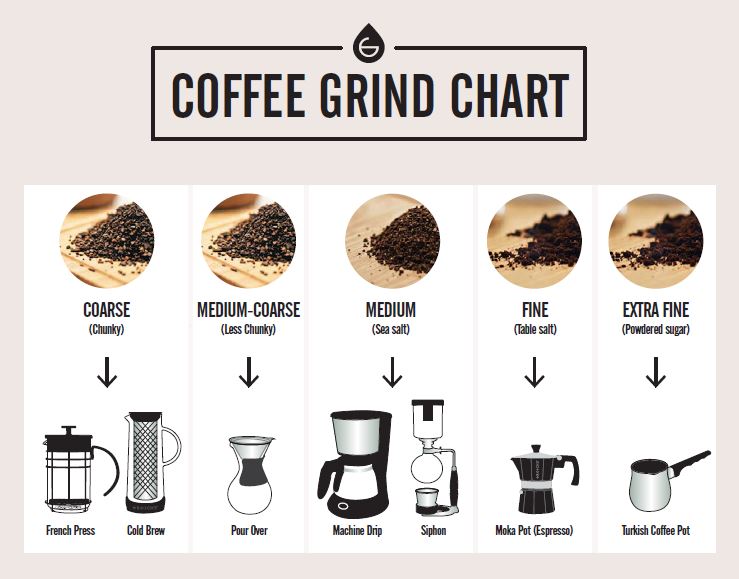When you’re ready to dive into the art of home espresso making, there’s no avoiding the importance of grind size. The espresso grind isn’t just a small detail—it’s the backbone of your brewing success. From the texture of your coffee grounds to the tools you use, getting the grind right is a blend of science and personal exploration. Along the way, some tools and tricks can make your journey smoother.
The Significance of Grind Size in Espresso
Understanding why grind size matters can transform your coffee game. Unlike a French press, which requires coarse grounds, or a pour-over, which thrives on medium grounds, espresso demands a fine grind. But it’s not just about fineness—it’s about consistency.
When you grind coffee, the water interacts with the particles, extracting the oils, flavors, and aromas that make espresso so unique. If the particles are uneven (a problem common with blade grinders), water flows irregularly, causing over-extraction (too bitter) or under-extraction (too sour). For espresso, a uniform grind is critical to achieve a balanced shot.
Choosing the Right Grinder for Espresso
If you don’t have a reliable grinder, consider investing in a burr grinder, such as the Baratza Encore or the Breville Smart Grinder Pro, both of which are highly rated on Amazon. Unlike blade grinders, burr grinders ensure uniformity, giving you consistent grounds every time. Many coffee enthusiasts swear by burr grinders for their precision and ability to fine-tune grind sizes.
Blade grinders, while affordable, chop beans unevenly, making them unsuitable for espresso. You’ll often end up with a mix of powdery fines and larger chunks, leading to unpredictable shots.
Dialing in Your Grind Size
Here’s where the fun begins: finding the grind size that works for your machine and beans. Start by aiming for a grind that feels like fine beach sand—slightly gritty but not clumpy. Then, experiment by brewing espresso and observing:
- Brewing too fast (under 20 seconds)? Your grind is too coarse. Adjust to a finer setting.
- Taking too long (over 30 seconds)? Your grind is too fine. Adjust coarser.
- Shot pulling smoothly between 25-30 seconds? You’ve likely hit the sweet spot.
Remember, the grind size might vary depending on the coffee roast. Lighter roasts often benefit from a slightly coarser grind to highlight their bright, fruity notes. Darker roasts, with their rich, chocolatey profiles, shine with a finer grind.
The Role of Freshness
When crafting espresso, fresh beans make a world of difference. Pre-ground coffee, even if stored properly, loses its flavor within hours. A grinder like the OXO Brew Conical Burr Grinder, available on Amazon, allows you to grind just what you need, ensuring maximum freshness.
Tips for Consistency
To achieve consistent espresso every time, focus on these essentials:
- Tamp with Care: Use a tamper to evenly compress the grounds in your portafilter. A tool like the Espro Calibrated Tamper ensures you’re applying the correct pressure.
- Weigh Your Grounds: Precision matters. A coffee scale, such as the Hario V60 Drip Coffee Scale, is a valuable tool for weighing your coffee. Aim for 18-20 grams of coffee for a double shot.
- Control Timing: Use a stopwatch or a scale with a built-in timer to track how long your espresso pulls.

Troubleshooting Grind-Related Issues
If your shots aren’t hitting the mark, the grind is often the culprit:
- Sour or Weak Espresso: Indicates under-extraction. Make the grind finer to slow down the water flow.
- Bitter or Harsh Espresso: Points to over-extraction. A slightly coarser grind will help balance the flavor.
- Uneven Shots: Could be caused by an inconsistent grind or uneven tamping. Revisit your grinder settings and tamping technique.
Enhancing Your Setup
To level up your espresso game, here are some highly-rated Amazon products that complement your grind efforts:
- Rancilio Rocky Espresso Grinder – A top-tier burr grinder praised for its durability and consistency.
- Fellow Atmos Vacuum Canister – Keeps your beans fresh by preventing oxidation.
- Acaia Lunar Coffee Scale – Designed for espresso brewing, this scale is compact and precise.
- Knock Box – A must-have for disposing of used grounds cleanly. The Breville Knock Box Mini is compact and convenient.

Practice Makes Perfect
Mastering your grind size takes time, but the journey is rewarding. Start by experimenting with your grinder’s settings, observing how changes impact your shots. As you refine your technique, you’ll develop an instinct for dialing in the perfect grind.
At first, you might find yourself overwhelmed by the details—timing, tamping, grinding—but remember, each shot is an opportunity to learn. The satisfaction of pulling a perfectly balanced espresso at home, one that rivals your favorite cafe, is worth every moment of effort.
Beyond Grind Size: Other Factors to Consider
While grind size plays a leading role, it’s just one piece of the puzzle. Don’t overlook:
- Water Quality: Use filtered water to avoid introducing unwanted flavors.
- Machine Maintenance: Clean your machine regularly to prevent buildup that can impact flavor.
- Beans: Experiment with different roasts and origins. Brands like Lavazza and Illy are popular for their consistent quality and rich flavor profiles.
Conclusion
Crafting espresso at home is a skill that takes patience, practice, and a willingness to experiment. The grind is a fundamental factor in pulling the perfect shot, but it’s also deeply personal—what works for one machine or bean might not work for another.
By investing in a quality grinder, experimenting with grind settings, and focusing on consistency, you’ll unlock the full potential of your espresso machine. The journey is as satisfying as the destination, and with each shot, you’ll move closer to barista-level mastery in your own kitchen.
